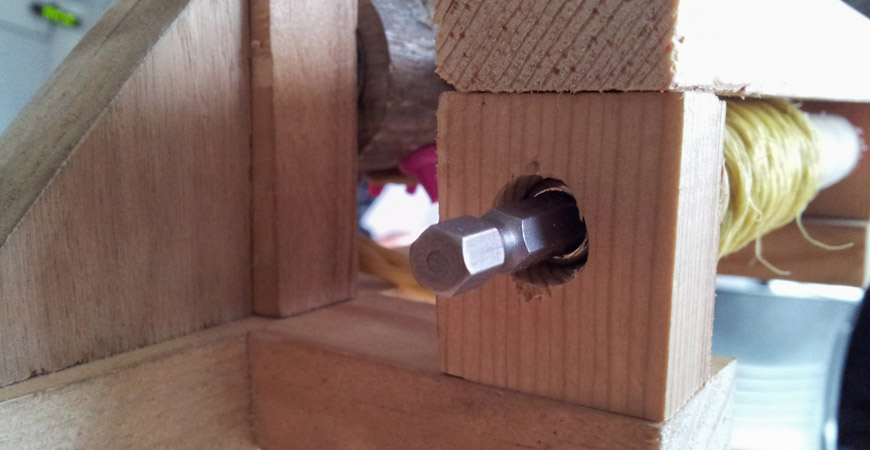
7 Easy DIY Tips for the Budding Handyman
In today’s economy, even the tool-shy among us have tried DIY tips for size. After all, it’s pretty tempting to buy a pipe wrench and try to fix the leaky sink yourself when the average plumber charges $100 or more to show up.
Get in over your head with your DIY project, though, and you could end up with a broken sink AND thousands of dollars of water damage to your home. These seven tips from home repair and improvement experts will help you save money with your DIY ideas and become the handyman–or handywoman–you’ve always secretly wanted to be.
1. Choose the right projects
This is the most important DIY advice- far more crucial than choosing the right tools.
It’s all about knowing your limitations and calling in an expert when needed. For example, if you’re not an electrician, trying to re-wire your house could lead to a fire or even a fatal shock.
Even safer work, such as painting a room, has a learning curve. You don’t know the potential problems until you’ve done it.
New York Times DIY columnist Bob Tedeschi told Bob Vila in an interview that choosing small starter projects for yourself is an excellent way to learn the ropes and build your confidence.
Tedeschi recommends starter projects such as replacing a shower head to learn plumbing 101 or painting a small room to gain brush and roller skills without taking on too much.
2. Plan Well
Once you’ve decided on a small project to tackle, plan out the steps involved and the tools and materials you will need for each step. This will help you plan how long the job will take and avoid wasting time on multiple trips to the hardware store.
Planning the project step by step might also help you realize if the job is more involved than you thought it would be.
3. Ask Questions
Once you’ve picked out a project and figured out the steps involved, Tedeschi reminds us that asking questions is okay. If you aren’t sure how to perform one of your project’s steps, ask someone at your hardware store or a friend who has done the job before, or go to a reputable website for instructions.
You may feel self-conscious about asking someone, but remember that no one knows everything, and it’s much better to educate yourself than to waste time and materials because you got it wrong.
4. A Picture’s Worth a Thousand Trips to the Hardware Store
Every cell phone has a camera, so use this technology to your advantage. Whatever you need to replace, whether a pipe, a light fixture, or a water heater hook up, take a photo to bring to the hardware store.
“I now use my cell phone to take pictures of everything that’s broken before I go to the hardware store (and sometimes I even bring the actual object with me),” Tedeschi says, “I’ve wasted many trips back and forth trying to describe a problem and getting the wrong tool or wrong screw. Pictures help a great deal.”
5. Don’t start a Job in the Evening
It may be tempting to start a job after dinner, but keep in mind your energy level and the hardware store’s hours before you dig in. It can be very frustrating to stop a job in the middle because you’re too pooped to continue or because you need a part and the store is closed.
Tedeschi says this advice is especially important if you’re working on plumbing, which can be hard to stop once you start.
6. Compare the Cost with the Benefit
This business wisdom applies to your DIY projects and tips, too. Always compare the price of a project with what you will get from it in terms of usefulness, enjoyment, and property value.
For example, if you barbecue twice a year, a $10,000 barbecue pit makes no sense, no matter how cool it looks.
This is especially important if you plan to sell soon and are looking to spruce up the property to get a better sale price. Before you spend any money on improvements, research or talk to a realtor about how much the improvement should add to the sale price.
7. Buy Quality Tools
Cheap tools may seem like a bargain, but they can slow your project down, mangle your work, and even break halfway through it and send you on an impromptu trip to the hardware store. “Any time I’ve bought cheap tools, I’ve spent more time fixing the tools than fixing my house,” says Gilbert S. of Springfield, Ohio.
Use these tips to achieve success in your DIY projects. And remember, Wet & Forget is the easiest tool for cleaning the moss, mold, mildew, algae or lichen stains off your outdoor surfaces.
Whether you’re cleaning your outdoor surfaces to increase your home’s “curb appeal” or simply for your family’s enjoyment, all you need is a garden sprayer to apply Wet & Forget. Then you can sit back, relax, and let Wet & Forget do the work for you.
Photo courtesy of Baminnick








